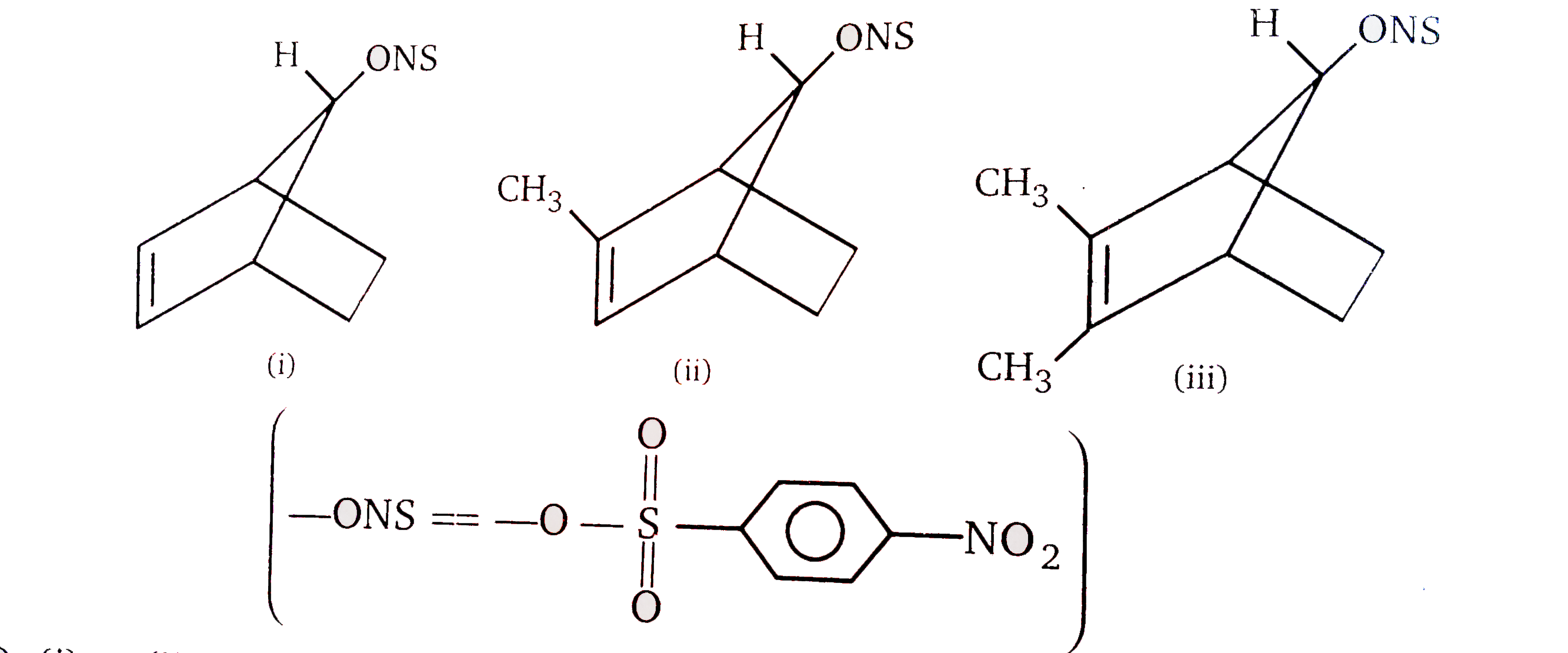The unit of rate constant for the reaction,
2H2+2NO→2H2O+N2
Which has rate =k[H2)[NO]2, is
mol L−1s−1,
S−1
mol−1L2s−1
mol L−1
The correct Answer is:C
To determine the unit of the rate constant (k) for the reaction:
2H2+2NO→2H2O+N2
with the rate law given as:
Rate=k(H2)(NO)2
we will follow these steps:
Step 1: Identify the order of the reaction
The rate law indicates that the rate of the reaction depends on the concentration of hydrogen ((H2)) and nitrogen monoxide ((NO)). The order of the reaction with respect to each reactant is as follows:
- For (H2), the order is 1 (since it is raised to the power of 1).
- For (NO), the order is 2 (since it is raised to the power of 2).
Step 2: Calculate the overall order of the reaction
The overall order of the reaction is the sum of the individual orders:
- Overall order = Order with respect to (H2) + Order with respect to (NO)
- Overall order = 1 + 2 = 3
Step 3: Write the unit of rate
The unit of rate is typically expressed in terms of concentration per unit time. In SI units, this is:
- Rate = molarity per second = mol L−1 s−1
Step 4: Relate the rate to the rate constant k
From the rate law:
Rate=k(H2)(NO)2
We can express the units of k as follows:
- Rearranging gives us:
k=Rate(H2)(NO)2
Step 5: Substitute the units into the equation
Substituting the units we have:
- Rate has units of mol L−1 s−1
- (H2) has units of mol L−1
- (NO)2 has units of (mol L−1)2 = mol2 L−2
Now substituting these into the equation for k:
k=mol L−1s−1(mol L−1)(mol2L−2)
Step 6: Simplify the units
This simplifies to:
k=mol L−1s−1mol3L−3
k=mol L−1s−1mol3L−3=1mol2L−2s
k=L2mol−2s−1
Final Answer
Thus, the unit of the rate constant k for the given reaction is:
L2mol−2s−1
---
The rate law indicates that the rate of the reaction depends on the concentration of hydrogen ((H2)) and nitrogen monoxide ((NO)). The order of the reaction with respect to each reactant is as follows:
- For (H2), the order is 1 (since it is raised to the power of 1).
- For (NO), the order is 2 (since it is raised to the power of 2).
The overall order of the reaction is the sum of the individual orders:
- Overall order = Order with respect to (H2) + Order with respect to (NO)
- Overall order = 1 + 2 = 3
The unit of rate is typically expressed in terms of concentration per unit time. In SI units, this is:
- Rate = molarity per second = mol L−1 s−1
From the rate law:
Rate=k(H2)(NO)2
- Rearranging gives us:
k=Rate(H2)(NO)2
Substituting the units we have:
- Rate has units of mol L−1 s−1
- (H2) has units of mol L−1
- (NO)2 has units of (mol L−1)2 = mol2 L−2
k=mol L−1s−1(mol L−1)(mol2L−2)
This simplifies to:
k=mol L−1s−1mol3L−3
k=mol L−1s−1mol3L−3=1mol2L−2s
k=L2mol−2s−1
Thus, the unit of the rate constant k for the given reaction is:
L2mol−2s−1
Topper's Solved these Questions
- BOOK - NCERT FINGERTIPSCHAPTER - CHEMICAL KINETICSEXERCISE - MCQs3videos
CHEMICAL KINETICS
- BOOK - NCERT FINGERTIPSCHAPTER - CHEMICAL KINETICSEXERCISE - Integrated Rate Equation25videos
CHEMICAL KINETICS
- BOOK - NCERT FINGERTIPSCHAPTER - CHEMICAL KINETICSEXERCISE - Assertion And Reason15videos
CHEMICAL KINETICS
- BOOK - NCERT FINGERTIPSCHAPTER - BIOMOLECULESEXERCISE - Assertion And Reason15videos
BIOMOLECULES
- BOOK - NCERT FINGERTIPSCHAPTER - CHEMISTRY IN EVERYDAY LIFE EXERCISE - Assertion And Reason15videos
CHEMISTRY IN EVERYDAY LIFE
Similar Questions
State the order with respect to each reactant and overall order for the reaction
2H2(g)+2NO(g)→2H2O(g)+N2(g)
Rate = k[H2][NO]2
Calculate the units for the rate constant.View SolutionThe rate law for the reaction
2H2(g)+2NO(g)→N2(g)+2H2O(g) is given by rate =≡k[H2][NO]2
The reaction occurs in the following two steps:
(a) H2(g)+2NO(g)→N2O(g)_H2O(g)
N2O(g)+H2(g)→N2(g)+H2O(g)
What is the rate of N2O in the mechanism ? What is the molecularity of each of the elementary stpes ?View Solution
Knowledge Check
- Question 1 - Select One
The difference rate law for the reaction
H2+I2→2HI isA−d[H2]dt=−d[I2]dt=−d[HI]dtB−d[H2]dt=d[I2]dt=12d[HI]dtC12d[H2]dt=12d[I2]dt=−d[HI]dtD−2dH2dt - Question 2 - Select One
Rate constant for a reaction H2+I2→2HI is 49, then rate constant for reaction 2HI→H2+I2 is
A7B1/49C49D21 - Question 3 - Select One
The reaction 2H2O2→2H2O+O2 is
r=k[H2O2]AZero order reactionBFirst order reactionCSecond order reactionDThird order reaction
The rate law for the reaction
C2H4Br2+3I−→C2H4+2Br−+I−3
is Rate = k[C2H4Br2][I−]. The rate of the reaction is found to be 1.1×10−4M/s when the concentrations of C2H4Br2 and I− are 0.12 M and 0.18 M respectively. Calculate the rate constant of the reaction.View SolutionThe possible mechanism for the reaction
2NO+2H2→N2+2H2O is
i) 2NO<⇒N2O2
ii) N2O2+H2slow−−→N2O+H2O
iii) N2O+H2fast−−→N2+H2O
a) What is rate law for the reaction?
b) What is the order of the reaction?View SolutionRelative rate of reaction with H2O
 View Solution
View SolutionRate constant for a reaction H2+I2→2HI is 49, then rate constant for reaction 2HI→H2+I2 is
View SolutionConsider this reaction,
2H2(g)+2NO(g)→N2(g)+2H2O(g)
The rate law for this for reaction is rate =k[H2][NO]2 .
Under what conditions could these Steps represent the mechanism?
Step1: 2NO→N2O2
Step2: N2O2+H2→N2O+H2O
Step3:N2O+H2→N2+H2OView Solution

